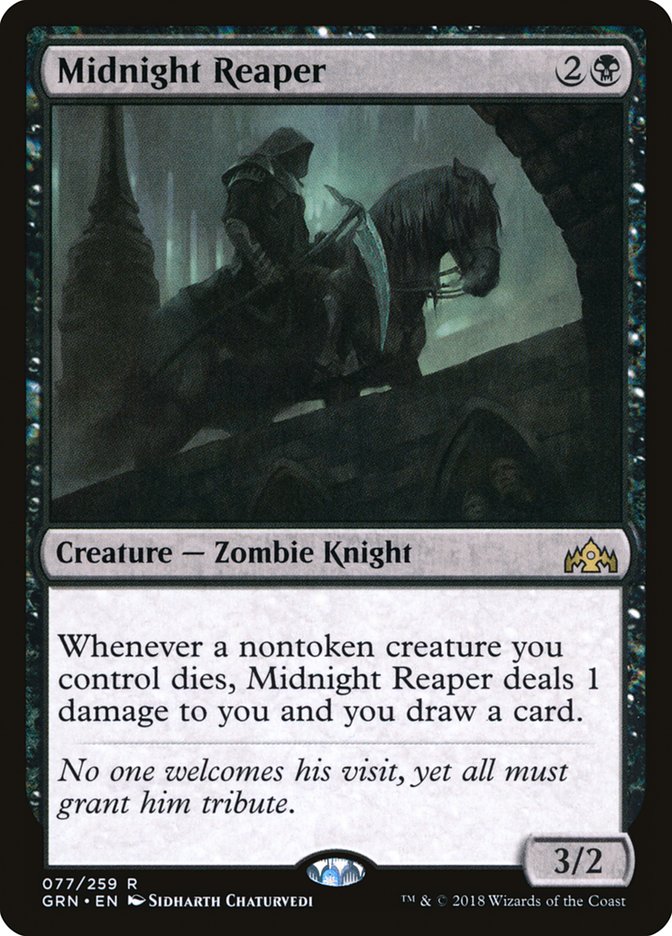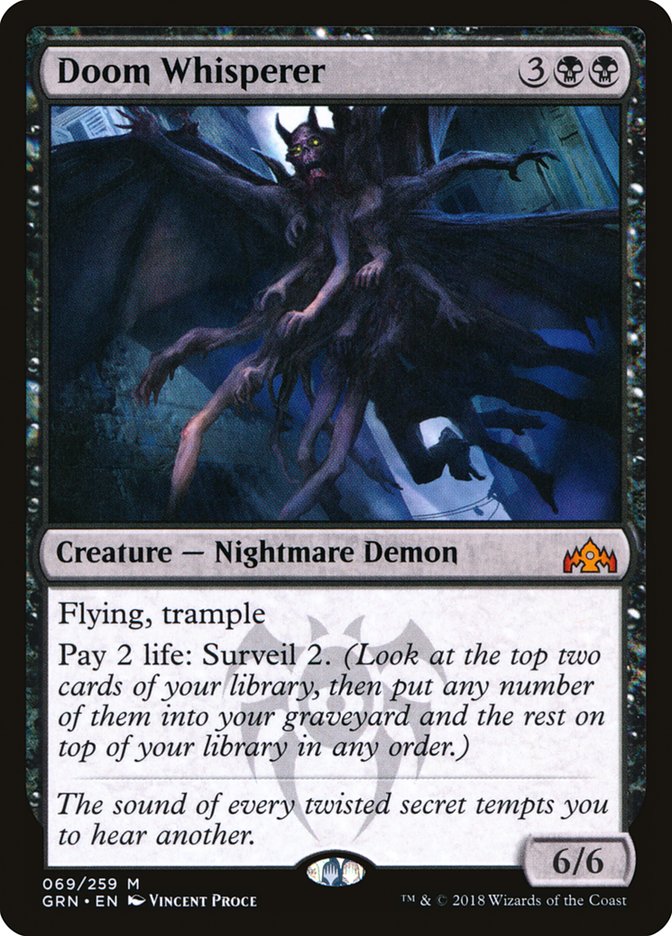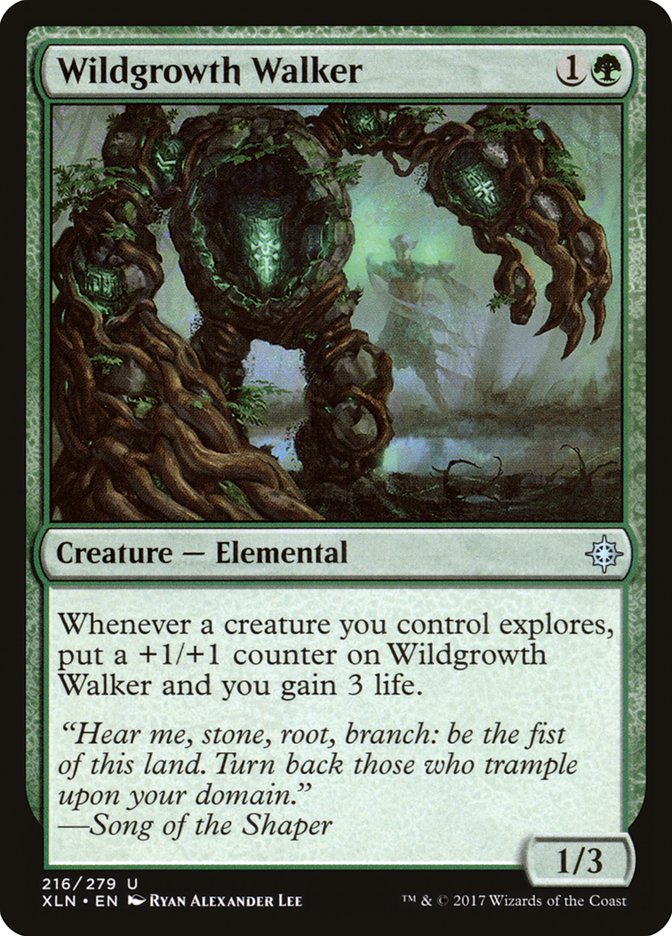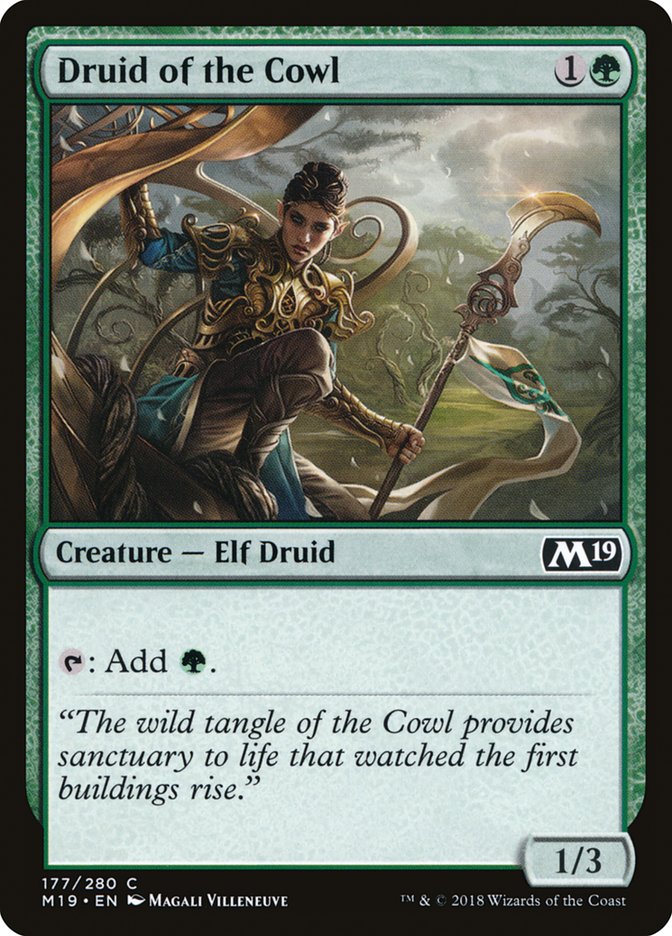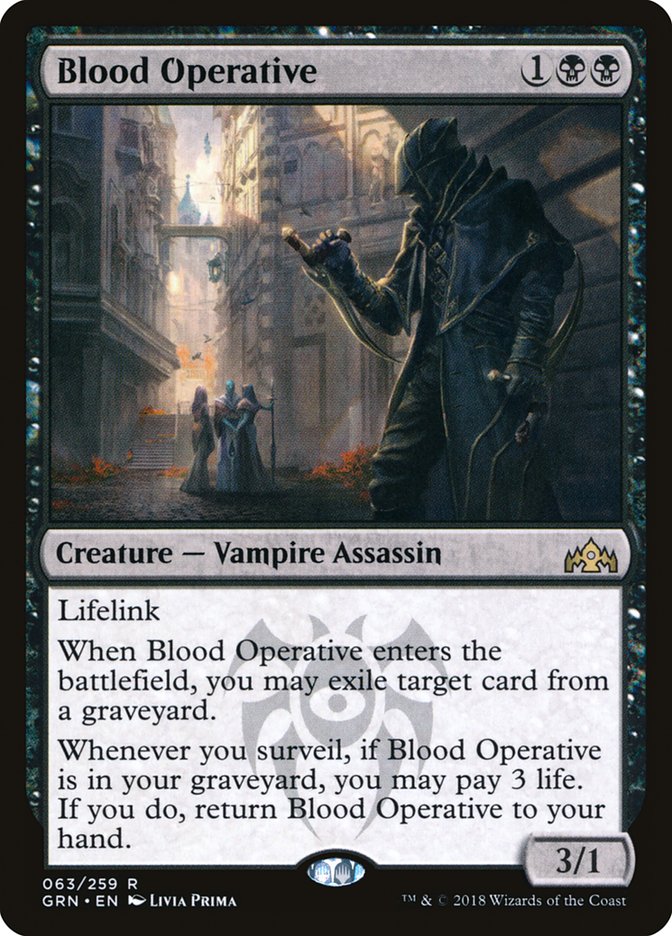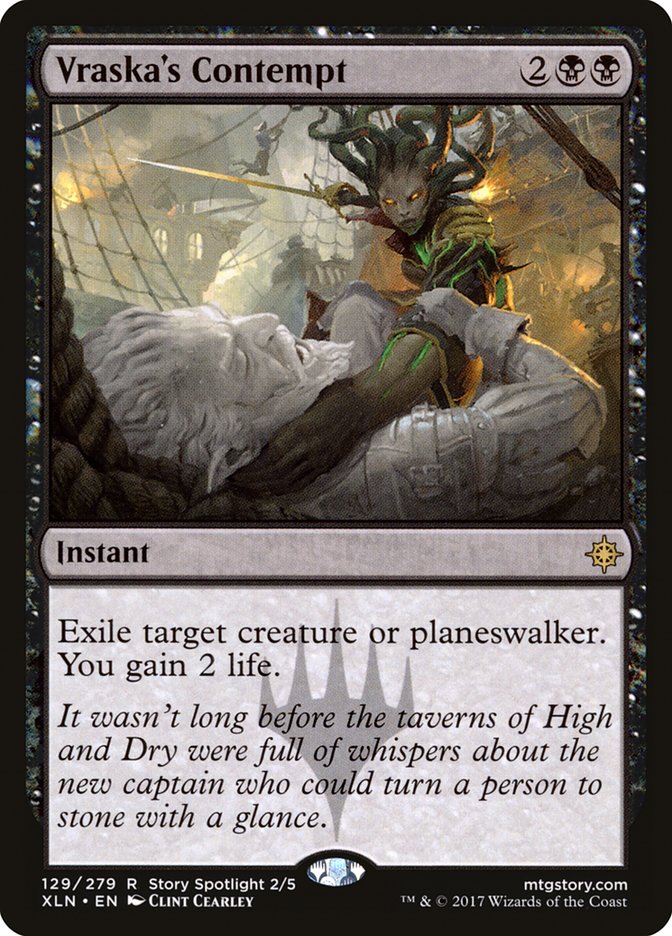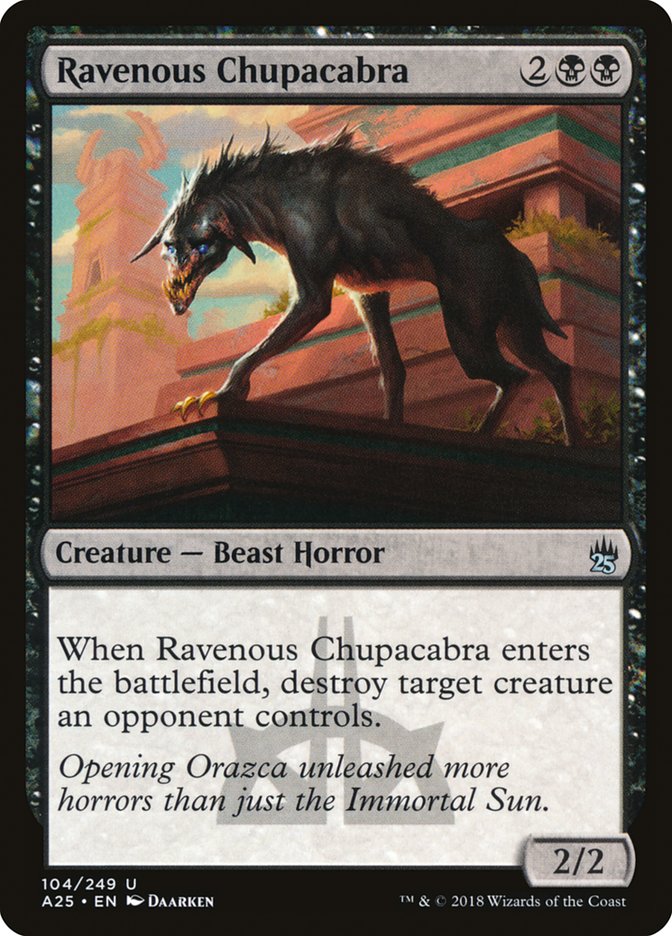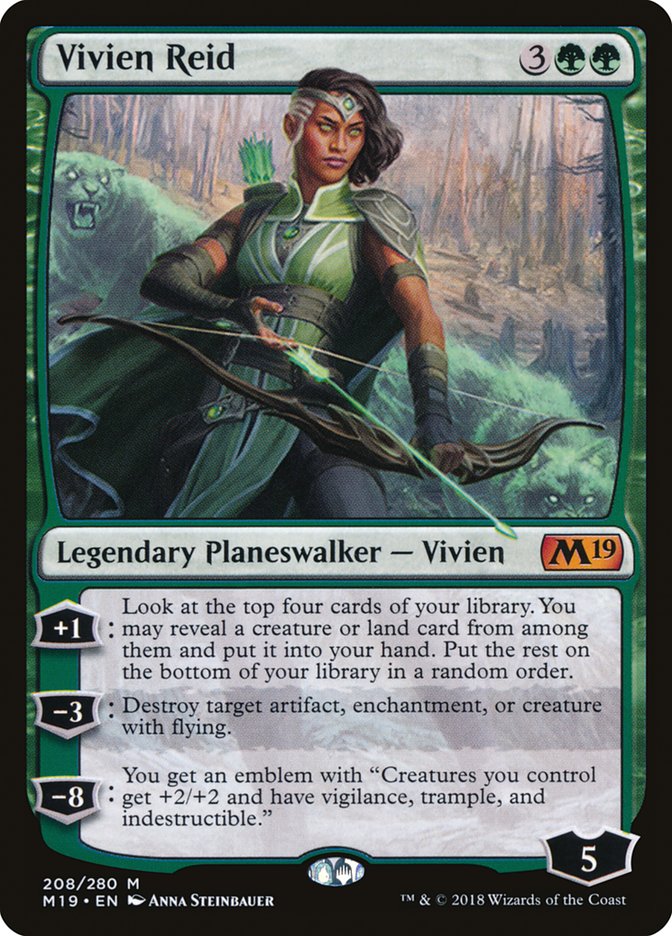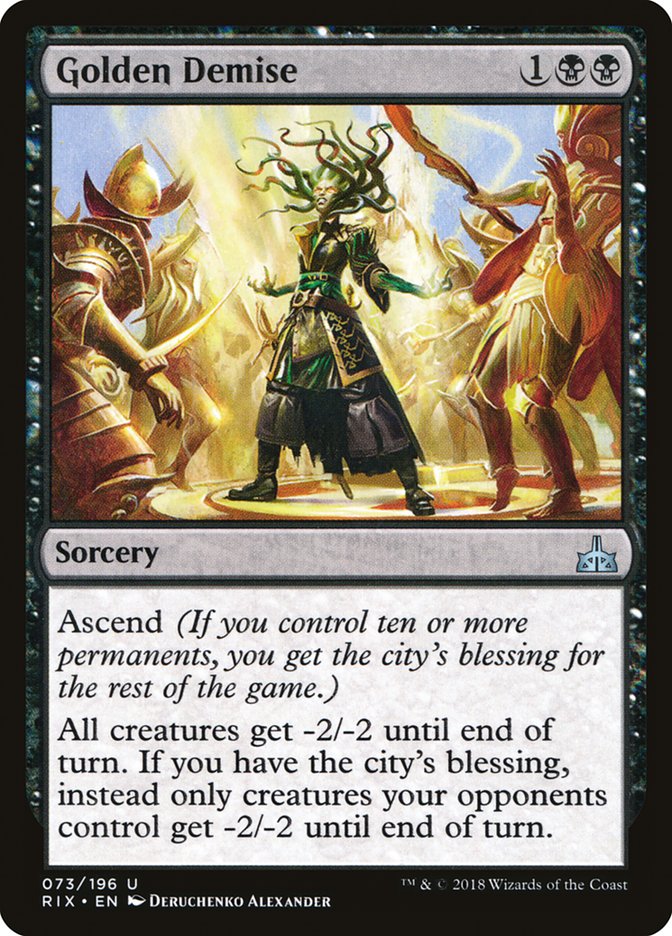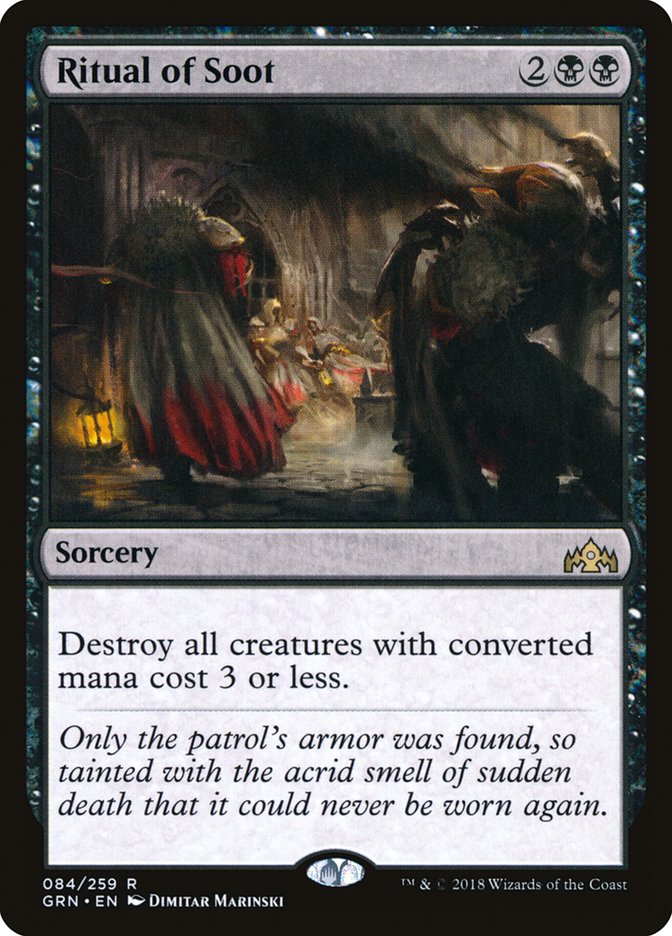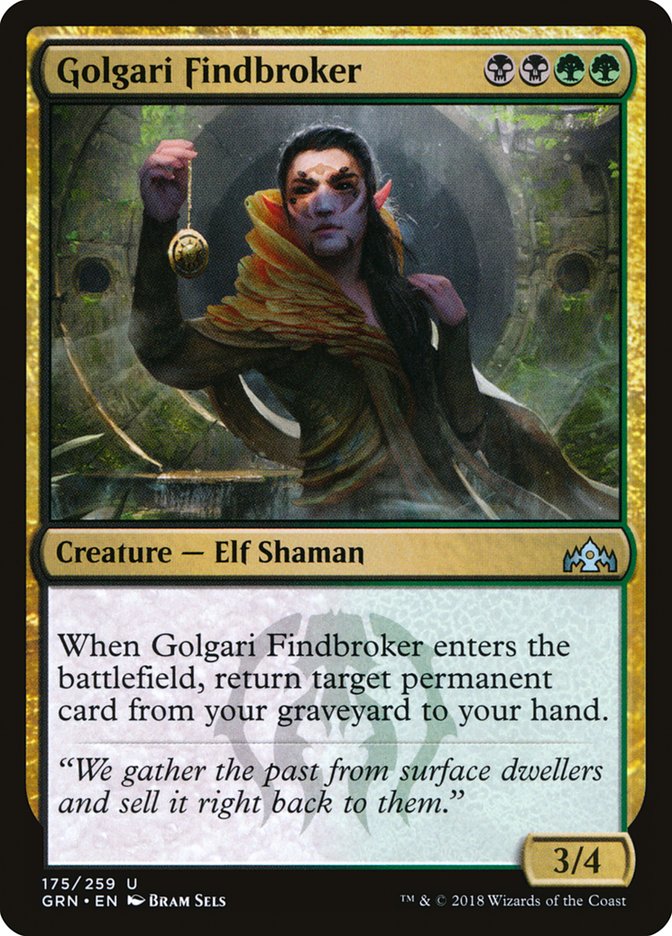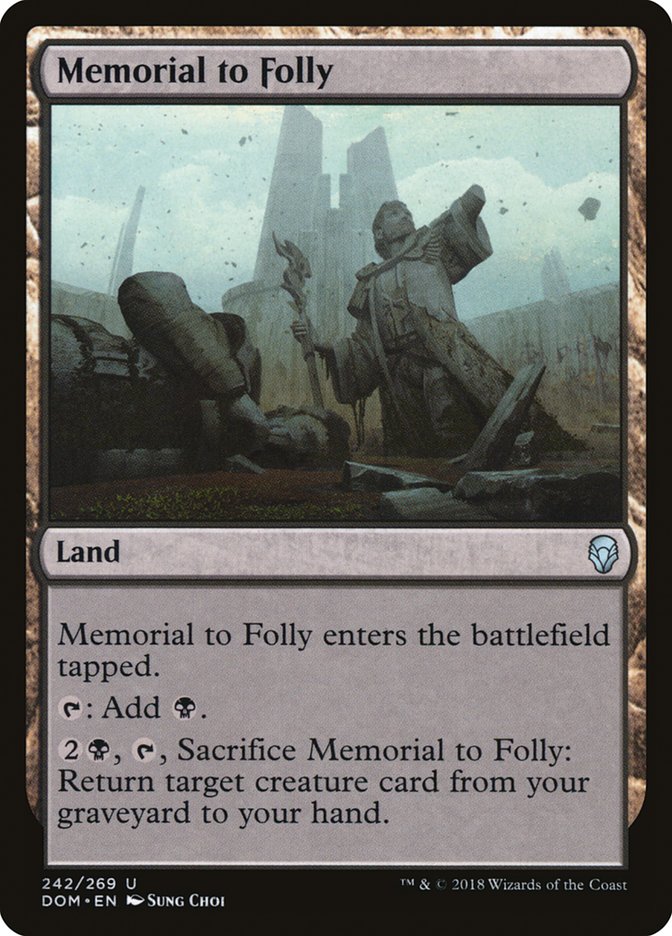How should one build Golgari?
A question as old as Ravnica itself…
Many of our finest philosophers such as William Edelton and Reid Dukington
III have spent their entire lives pondering this very question. It seems
like a fool’s errand to even attempt completing the work of these
fine gentleman, and some would consider it arrogant to even bother. That’s
not going to stop me – the best Standard player of all time – from doing so
though. Today we answer this complex philosophical question; one that’s
peaked mankind’s interest for far too long.
The first step to perfecting a Golgari decklist is understanding if you’re
worthy of even wielding the strategy. Few understand the archetype well
enough to treat it with the respect it deserves. One foolish explore or
land incorrectly sequenced and the game could be over, as Golgari is very
unforgiving. An ancient scholar by the name of Wrapterous Wrapterino
created the first ever documented work detailing if one was worthy of the
deck or not. Initially his work was made in quiz form, but Buzzfeed
declined acquiring it.
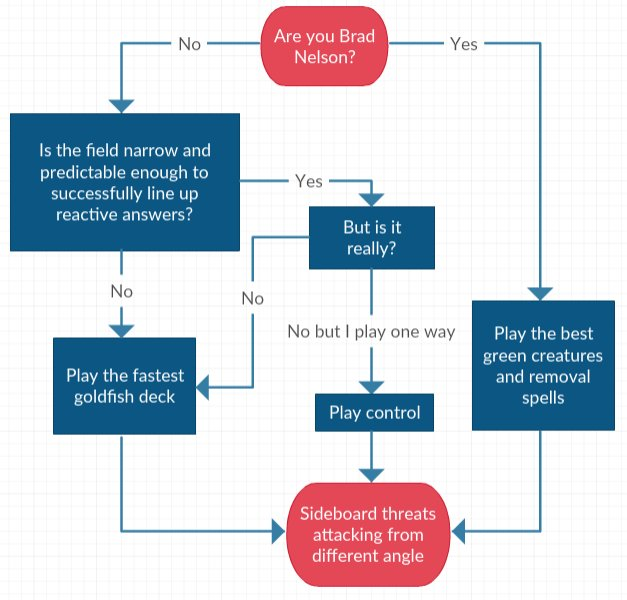
Wrapterous suggests that if you’re not Brad Nelson you shouldn’t wield
Golgari, but I don’t agree with that. Anyone can play Golgari even if they
aren’t Brad Nelson. They just need to listen to Brad Nelson when he writes
about it on StarCityGames.com. Then, and only then, will they have the
wisdom to pilot the strategy perfectly. To prove this, I’ll be bestowing
upon you all my wisdom. Listen carefully as the words I speak of today will
help you on your quest to become the Golgari Reborn.
Lesson One: Respecting the Mirror
It’s difficult to perfect a Golgari list when the mirror match demands so
many specific cards that aren’t great against the rest of the metagame.
Carnage Tyrant, Midnight Reaper, and Assassin’s Trophy are all cards better
suited for the mirror but aren’t great against the rest of the field in
game 1. On the opposite side of the coin, Doom Whisperer and Wildgrowth
Walker are great against a large spread of the metagame but are lackluster
in the mirror. This creates an interesting quandary – do you respect the
Golgari matchup with your maindeck or focus on the rest of the metagame?
The answer to this could change as the metagame evolves, but for right now,
I believe it to be foolish to prepare for the mirror match with your
maindeck. Boros Tokens, Mono-Red Aggro, and Izzet Drakes make up such a
large percentage of the metagame which makes it foolish to lean on Carnage
Tyrant to close games or Midnight Reapers to gain card advantage. These are
the types of cards you’d want if the mirror and Jeskai Control were
everywhere, but that doesn’t seem to be the case right now. Midnight Reaper
isn’t the worst card to cast in the face of a Tocatli, Honor Guard, but at
the same time it’s not going to save you if you’re unable to get the
permanent off the battlefield either.
Doom Whisperer isn’t the worst thing to cast in the Golgari mirror, but it
can never be considered a good card since it’s so easily killed by Vivien
Reid or Ravenous Chupacabra. It’s spectacular in this deck against almost
everything else though. The surveil ability can be abused alongside explore
triggers, and sometimes a large portion of your life total can either end
the game or find a much needed sweeper. I’ve been thoroughly impressed by
this card and expect it to be a must-include in Golgari’s maindeck moving
forward. It’s most potent alongside the entire explore package of
Wildgrowth Walkers and explore creatures.
Matt Nass’s maindeck was exemplary for the metagame that showed up for Pro
Tour Guilds of Ravnica, and I expect it to continue to shine this
next weekend. Seriously, I was very jealous of this decklist.
Creatures (24)
- 4 Llanowar Elves
- 1 Carnage Tyrant
- 4 Wildgrowth Walker
- 4 Merfolk Branchwalker
- 2 Seekers' Squire
- 4 Jadelight Ranger
- 2 Ravenous Chupacabra
- 3 Doom Whisperer
Planeswalkers (2)
Lands (24)
Spells (10)
Sideboard

Lesson Two: Preparing for Archetypes That Lack Consensus
It’s been a long time since Standard has felt this way. Before Guilds of Ravnica Standard, it seemed like one deck took over the
format and subsequently became perfected by the hive mind. We haven’t yet
seen this happen for a variety of reasons. For starters, it seems like
there isn’t a “best deck,” but also there isn’t one specific way to build any one deck. Just looking at the top 4 of the Pro Tour proves
this point, but you can dig deeper to find more examples. There were four
different versions of Golgari that all went 8-2 at the Pro Tour, and the
Izzet Drake decks disagreed on how many Goblin Electromancers deserved to
be in the deck. This format is diverse in both archetypes and varieties of
builds.
Diversity in design always complicates things for reactive strategies. It’s
almost impossible to have the correct answers when there’s too many decks
doing too many things. This also means it’s quite important for a Golgari
deck to have a high density of good threats against a wide percentage of
the metagame, so it doesn’t need to lean too heavily on reactive elements
to win games. This is another reason why preparing for the mirror in game 1
is such a bad idea since it means you’ll have to dedicate even more cards
in the sideboard for other matchups which you may not have room for.
There’s two ways to be more proactive in Golgari: You can either play
Wildgrowth Walker, or max out on acceleration with Druid of the Cowl. I’ve
tried pretty much every version and think for right now it’s important to
have access to Wildgrowth Walker as it’s a great way to get onto the
battlefield against a large portion of the format’s decks. It’s also the
most consistent way to develop your mana and plays well into the long game
when mana acceleration isn’t as important. There were quite a few builds
that played four copies of Llanowar Elves and Druid of the Cowl which will
be much better in the mirror and also decent against Boros Aggro. It’s also
not that bad of a strategy against certain Izzet Drakes and Mono-Red Aggro
sideboard plans, but that’s a risky route to take sometimes, especially if
more Deafening Clarions start popping up.
For now, it’s unlikely that the masses will all play the same variations of
the available archetypes which makes me want to lean on Wildgrowth Walker
builds and try to do my own thing on most of my turns. Maybe soon we’ll all
be on the same page for what version of Boros Aggro, Izzet Drakes, and
Mono-Red Aggro should be played, which can help us tune our Golgari deck
differently, but for now it seems much better to predict unpredictability.
Lesson Three: Don’t Underestimate the Competition
Years ago, I considered the competition at Grand Prix and SCG Opens to be
one week behind, and the masses would usually play the “best deck” from the
weekend before. This meant that the event right after the Pro Tour would be
littered with whatever deck won the Pro Tour. I learned a valuable lesson
after Pro Tour Amonkhet though. Gerry Thompson won the event with
Mono-Black Zombies, but the deck barely was in attendance the next weekend.
Instead, everyone was playing a similar build of Temur Aetherworks that
Yuuya Watanabe used to take second in that very same Pro Tour. It was
clearly the better deck, and Yuuya’s take on it was spectacular. His build
would actually go on to be the best build of the deck and eventually, got
banned.
Creatures (10)
Lands (22)
Spells (28)
- 1 Negate
- 1 Kozilek's Return
- 4 Aetherworks Marvel
- 4 Woodweaver's Puzzleknot
- 4 Harnessed Lightning
- 4 Attune with Aether
- 4 Glimmer of Genius
- 3 Dissenter's Deliverance
- 3 Censor
Sideboard

That was the last time I didn’t make day two of competition at a Standard
Grand Prix. Like I said, I learned my lesson.
Mono-Red Aggro seems like a great answer to all the white aggressive decks
running around. Years ago, that would make me think it was the easy deck
choice for the next weekend, but now I predict there to be more Mono-Red
Aggro than white-based aggressive decks. This doesn’t mean you shouldn’t
respect aggressive white decks; it just means you need to respect both of
these decks!
Mono-Red Aggro has had the most consensus as many players in the Pro Tour
played a very similar list to what Etienne Busson used to win Grand Prix
Lille a couple weeks ago. There were only a few people who deviated from
the beaten path, but their exposure could help others follow in their
footsteps.
Creatures (20)
- 4 Fanatical Firebrand
- 4 Ghitu Lavarunner
- 4 Goblin Chainwhirler
- 4 Viashino Pyromancer
- 4 Runaway Steam-Kin
Lands (22)
- 22 Mountain
Spells (18)
Sideboard

The facts about this deck are that this decklist is quite unusual, and Eric
prepared for the event with Team Legion. This means the deck was put
through extensive testing and a group of highly respectable pro players
concluded that Rekindling Phoenix was not necessary for Mono-Red Aggro to
win games. That’s a very bold claim on the surface, but once you really
think about it, that makes a whole lot of sense. There’s a ton of Lava
Coils and Conclave Tribunals running around. Additionally, Golgari decks
are conditioned to have every copy of Vraska’s Contempt and Deathgorge
Scavenger in after sideboard. Not having the four-mana mythic makes a lot
of sense!
Creatures (20)
- 4 Fanatical Firebrand
- 4 Ghitu Lavarunner
- 4 Goblin Chainwhirler
- 4 Viashino Pyromancer
- 4 Runaway Steam-Kin
Lands (21)
- 21 Mountain
Spells (19)
Sideboard

Freddie is, in fact, packing their bags for the Pro Tour as they took down
this past weekend’s Magic Online PTQ with Mono-Red Wizards. ProTourFreddie
also didn’t think Rekindling Phoenix was necessary, as the metagame has
become quite hostile for the fiery bird.
My takeaway for this is that it’s no longer correct to expect every
Mono-Red Aggro opponent to have four Rekindling Phoenixes in against
Golgari after sideboard. In fact, it’s probably incorrect to have four
copies of Vraska’s Contempt against every Mono-Red Aggro opponent as every
other creature causes a trade down in the mana invested into the
threat/removal exchange.
This also makes it very important to suss out which version you’re playing
against for when it comes time to sideboard. Lava Coil in the maindeck is a
clear indicator that the opponent is most likely on Team Legion’s version
of the deck. This is good to know when it comes to sideboarding as their
deck will be very spell dense after sideboard. Cards like Duress and
Carnage Tyrant don’t seem that bad in certain situations against that
version.
Izzet Drakes has become a good matchup for Golgari as of late, but I expect
that to change sometime soon as the masses begin incorporating the best
tech from Pro Tour Guilds of Ravnica into their builds.
For example, not everyone had Entrancing Melody in their sideboard. This
card seems great against white-based aggressive decks as it’s a clean
answer to Adanto’s Vanguard, but it’s also amazing at stealing a Wildgrowth
Walker that’s gotten out of control. When that happens, the Golgari player
usually has to use a removal spell on it, and I’ve already discussed in
early articles about how Izzet finds threats faster than other decks can
find answers.
I haven’t figured out the best way to approach the Izzet Drakes matchup
from the Golgari side as technology keeps changing, but I’m pretty sure
keeping in a few Carnage Tyrants isn’t going to be the worst plan out there
– especially since Izzet Drakes is so used to Golgari leaning on Wildgrowth
Walker and removal spells to win the games.
Lesson Four: Don’t Try To Win Every Game
This sounds stupid on the surface, but trust me there’s a valuable lesson
here. Standard is in a unique place right now as the margins are very
close. This isn’t the easiest format to rattle off win after win after win.
In fact, the three best performing teams in Limited at the Pro Tour all
went 50% or worse in Constructed. That’s a very interesting stat when you
think about just how many Hall of Famers, World Champions, and Platinum
pros make up those teams.
Building your deck to have the ability to win against every deck’s top
draws is foolish as it could hurt your chances of winning the closer games.
You need to cover your bases and understand that there’s going to be times
you just can’t win. Don’t skew your sideboard or your sideboard plans to
try to win the impossible games. Make sure your deck is built with a sturdy
foundation and can win a larger portion of the games played. This means you
don’t want to rely on one aspect of your strategy too much or
overcompensate for one aspect of theirs. Games in this format can play out
in a variety of ways, so making your strategy too specific can cause a lot
of unforeseen issues to popup.
A good example of this is not playing cards like Assassin’s Trophy because
your opponent gets one land closer to a Fight with Fire you’ve lost to
before. Sure, that sucks when it happens, but not having enough answers for
Experimental Frenzy will cause you to lose way more games.
Lesson Five: Play Brad’s Build for the Weekend
A valuable lesson very few get access to on a week-to-week basis, but one
I’ll gladly give out for SCG Vegas and Grand Prix Milwaukee: To quote four World
Champions, “I always play Brad’s decks, they are the best!”
Paraphrasing, of course.
Brad’s deck for the weekend is going to look very similar to what Matt Nass
played last weekend. In fact, this entire article was manufactured just to
pay homage to his deckbuilding prowess. I could have spent valuable time
talking about the Golgarbage list I played at the Pro Tour, but I value
your time over my own hubris.
I’d change a few things about his list. Maybe it’s because I don’t
completely understand some of his card choices, but I’ll do my best to
explain them.
Blood Operative is clearly in his deck to fight back against Izzet Drakes,
and Matt’s high number of Vraska’s Contempts shows that he won’t need to
lean on Deathgorge Scavenger to kill Rekindling Phoenix. That rarely
happens anyway.
I’m not the biggest fan of Blood Operative though. It can be found with
Doom Whisperer, which is nice, but sometimes you need to be able to snag an
Arclight Phoenix in the early turns; that can be difficult given that
double black isn’t always the easiest thing to have access to. I also
dislike that Blood Operative cannot exile cards within combat. The lifelink
each turn is useful, but Deathgorge Scavenger can attack into Drakes which
is also good. Until I get more data, I’m going to lean on Deathgorge
Scavenger, but I won’t argue that it’s a definitive choice.
This is a tough one for me as I really like Ravenous Chupacabra. Of course
the exile aspect is strong with Vraska’s Contempt but I just highly value
the ability to return Ravenous Chupacabra from the graveyard or find it
with Vivien Reid. I’m also not sold a Golgari deck needs access to all four
copies of Vraska’s Contempt and two copies of Assassin’s Trophy.
Vivien Reid is by far the best Planeswalker in Golgari and one I value so
highly that seeing only two in his list saddens me. That said, maybe it’s
the correct number especially when you tell me I’d have to remove either a
Doom Whisperer or Carnage Tyrant from the deck to make room. My guess is
Nass struggled for a long time on these numbers and finally settled on
these as time was running out. My plan is to do the same and only deviate
if I have a strong reason to do so. For now, though, I don’t have one.
I believe both cards belong in certain builds of Golgari and that the
exclusion of Golgari Findbroker makes me believe Golden Demise is best in
this build. I really don’t like Golden Demise because sometimes it will be
absurd and other times fairly lackluster, but I consider it a necessary
evil against Boros Tokens.
I really can’t say with certainty if this Golgari Findbroker is worth it.
For sure not in a build like Matt Nass’s as it works best with more
planeswalkers, but I think you want more Golgari Findbrokers when the
format is slower. That said, that can’t really happen with Carnage Tyrant
running around. I guess it’s just best to trust in Team Ultra Pro’s Matt
Nass and not play the card.
I’ve found Memorial to Folly to get better in explore builds of Golgari and
worse in ramp versions. Three does seem like a lot as I find it important
to have an untapped second black source, but at the same time it works so
well with Doom Whisperer in the lategame. I’ve played Matt’s list with both
two and three copies and concluded that the card hasn’t caused me to lose
any games yet due to entering the battlefield tapped. I guess I’ll stay and
three.
Here’s my current list.
Creatures (25)
- 4 Llanowar Elves
- 1 Carnage Tyrant
- 4 Wildgrowth Walker
- 4 Merfolk Branchwalker
- 2 Seekers' Squire
- 4 Jadelight Ranger
- 3 Ravenous Chupacabra
- 3 Doom Whisperer
Planeswalkers (2)
Lands (24)
Spells (9)

I understand that this list is only a couple cards off Matt’s original
build, but like I’ve stated many times in the article, his list is very good. I’ve tried quite a few of the other builds of Golgari
from the Pro Tour, and they just all have issues with the other decks in
the metagame. The only deck I’ve struggled with is Grixis Disinformation
Campaign which is a bad matchup for any Golgari variant. Everything else
has felt good, and I’d be excited to play this deck this weekend.
That doesn’t mean things won’t change from now and this weekend. Hopefully
nothing too drastic happens before then but if it does, I’ll do my best to
get you updated information before registration this weekend!


